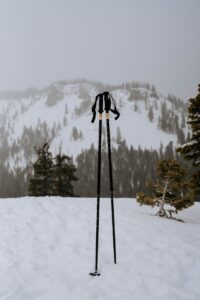February 19, 2018 by Alison Tunley
Get a Free Quote
Our Accreditations





Recent Updates
Culture-bound syndromes and how language shapes illness
In her book Sleeping Beauties, neurologist Suzanne O’Sullivan explores the phenomenon of culture-bound illnesses around the world. The conditions she is interested in are psychosomatic disorders which arise due to a complex interaction between the mind and body, but… Read More
I sometimes wonder if the Winter Olympics are the sporting event watched by the greatest number of people with absolutely no knowledge of the sports involved. Or maybe this is a peculiarly British perspective because our lack of snow and ice hampers any skiing, skating or snowboarding aspirations. At any rate, this is the only sporting coverage to win over all three of my kids, even the teenager who is opposed on principle to anything that might involve physical exertion (including by other people). All of them are hooked on the skeleton, big air and mogul skiing antics. And I think at least part of the charm is in the linguistic novelty of these events. None of us can claim to have any kind of insider knowledge or understanding.

Every night we settle down to watch the Winter Olympics’ highlights of the day and to revel in the marvellous and utterly alien terminology. Listening to the snowboard commentary is like tuning in to a foreign-language broadcast. The event names alone have an exotic promise, with snowboarders competing in halfpipe, slopestyle and big air contests. And the stunts they perform have suitably thrilling monikers. The boarders pull off fakies, backside rotations, Haakon flips, inverted aerials and McTwists. The innocuous word “air” is used to describe any manoeuvre where the snowboard lifts off the ground and it can be prefixed with an array of terms sure to baffle the newbie: flying squirrel, mute, mosquito, nose poke, nuclear, roast beef, seatbelt, shifty, slob and (my personal favourite) the stalefish air.
Not to be outdone, figure skating gives us the swizzle and the twizzle, various kinds of Salchow and Lutz (both named after the skaters who invented these jumps), and a host of different spins: from the camel to the haircutter, the shotgun and the doughnut. All of which make me dizzy just looking at them. Then there is the aptly named death spiral, an element in pair skating where the man acts as the anchor and holds on to the woman’s hand as she rotates around him in a virtually horizontal position, perilously close to the ice.
Curling might be less hazardous, but it has some confusing terminology of its own. Stones or rocks are curled across the “sheet” (ice) towards the “button” (centre of the target). The “hammer” is simply the final stone played in each end, and the “shot rock” is the stone closest to the button. Meanwhile, the “pebble” has nothing to do with the rocks or stones, but refers to the droplets of water applied to the playing surface to make the stones slide.
Ice hockey is arguably the Winter Olympics’ blue riband event and it doesn’t disappoint when it comes to the lingo either. You definitely want to avoid being a “duster”, a player who doesn’t play much and “collects dust” on the bench. If you “light the lamp”, you’ve scored a goal. Sometimes a “turtle” is recommended – this involves avoiding a fight by dropping to the ice and covering your head with your gloves. And we’ll all be hoping for a few “barn burners”, high-scoring games, before the closing ceremony.
Sources
http://www.the-house.com/portal/snowboarding-terms/
https://sports.vice.com/en_ca/article/9k3v85/a-beginners-guide-to-hockey-slang
Get a Free Quote
© 2024 All Rights Reserved
Rosetta Translation, 133 Whitechapel High St, London E1 7QA · 0207 248 2905
Comments
Add Comment